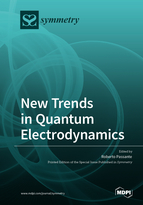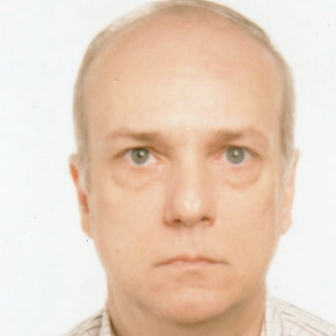New Trends in Quantum Electrodynamics
A special issue of Symmetry (ISSN 2073-8994). This special issue belongs to the section "Physics".
Deadline for manuscript submissions: closed (15 July 2018) | Viewed by 21761
Special Issue Editor
Interests: casimir physics; quantum electrodynamics; quantum fluctuations; radiative processes in static and dynamical structured environments; quantum field theory in accelerated frames and in a curved space-time; quantum optomechanics; resonances and dressed unstable states; microscopic origin of time asymmetry in quantum physics; cosmological axions and dark matter; axion electrodynamics
Special Issues, Collections and Topics in MDPI journals
Special Issue Information
Dear Colleagues,
Quantum Electrodynamics is one of the most successful physical theories, in which predictions agree with experimental results with exceptional accuracy. Nowadays, even after several decades since its introduction, it is a very active research field from both theoretical and experimental point of view. The aim of this Special Issue is to present recent relevant advances in quantum electrodynamics, both theoretical and experimental, and related aspects in quantum field theory and quantum optics.
Topics that will be included are:
- Quantum electrodynamics in external environments such as static or moving boundaries
- Cavity quantum electrodynamics
- Coherent energy transfer
- Macroscopic quantum electrodynamics
- Radiative processes in structured environments such as static and dynamic photonic crystals or photonic crystals waveguides
- Physical phenomena related to vacuum fluctuations, including cosmological aspects
- Dispersion and resonance interactions between atoms
- Casimir and Casimir-Polder effects, also in nonequilibrium configurations
- Quantum optomechanics
- Quantum electrodynamics in curved space and the Unruh effect
Guest Editor
Manuscript Submission Information
Manuscripts should be submitted online at www.mdpi.com by registering and logging in to this website. Once you are registered, click here to go to the submission form. Manuscripts can be submitted until the deadline. All submissions that pass pre-check are peer-reviewed. Accepted papers will be published continuously in the journal (as soon as accepted) and will be listed together on the special issue website. Research articles, review articles as well as short communications are invited. For planned papers, a title and short abstract (about 100 words) can be sent to the Editorial Office for announcement on this website.
Submitted manuscripts should not have been published previously, nor be under consideration for publication elsewhere (except conference proceedings papers). All manuscripts are thoroughly refereed through a single-blind peer-review process. A guide for authors and other relevant information for submission of manuscripts is available on the Instructions for Authors page. Symmetry is an international peer-reviewed open access monthly journal published by MDPI.
Please visit the Instructions for Authors page before submitting a manuscript. The Article Processing Charge (APC) for publication in this open access journal is 2400 CHF (Swiss Francs). Submitted papers should be well formatted and use good English. Authors may use MDPI's English editing service prior to publication or during author revisions.
Keywords
- Quantum electrodynamics
- Cavity quantum electrodynamics
- Macroscopic quantum electrodynamics
- Vacuum fluctuations
- Quantum electrodynamics in external backgrounds
- Unruh effect
- Quantum optomechanics
- Photonic crystals






